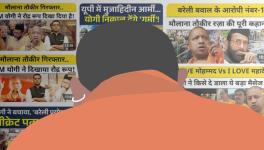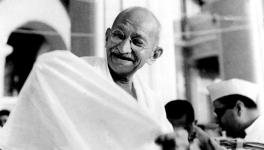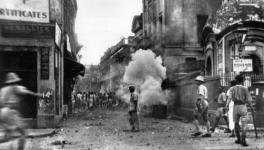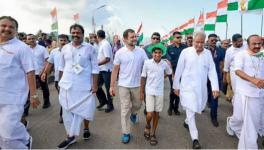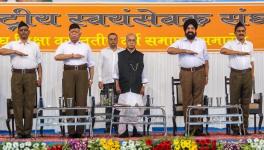Why Malerkotla is a Symbol of Brotherly Ties in Punjab
The date was 16 February 2020. A massive rally had been organised by a number of people’s organisations of Punjab against the divisive CAA, NRC and NPR trio in Malerkotla. Farmers, labourers, women, youth and children arrived in huge numbers and together they raised the slogan, “Bhai-bhai nu ladan nahi dena, san 47 banan nahi dena—We won’t let brothers fight, there won’t be another 1947.”
Vinay, a resident of Malerkotla who attended that rally, said, “Yes, I belong to the Hindu religion, but I stand with my Muslim brothers against a black law like the CAA of the central government because it is not a religion but a united fight for all of us.”
Dressed in traditional attire, Najar Singh, a middle-aged Sikh from Bathinda, said with enthusiasm and emotion, “I have come here to pay off the debt we owe to the land of Malerkotla. Three hundred years ago, when the Nawab of Sirhind ordered Guru Gobind Singh’s young children to be buried alive, the Nawab of Malerkotla had raised the ‘Haa da Naara’ in favour of the children.”
Now, after about one and a half years, Malerkotla is in the national limelight again. The reason is that the Captain Amarinder Singh-led Punjab government has made it the 23rd district of Punjab. As soon as the new district was announced, Uttar Pradesh Chief Minister Yogi Adityanath tweeted that the formation of Malerkotla at this time reflects the divisive policy of the Congress party. Yogi has termed it unconstitutional and called it Muslim appeasement. Yogi said in his tweet that any respect based on religion is against the basic spirit of the Constitution.
Describing Yogi’s tweet as provocative, Chief Minister Amarinder Singh said that Yogi knows nothing about the moral values of Punjab or the history of Malerkotla. A former ally of the BJP, the Akali Dal, also took stern note of Yogi’s remark. Akali Dal leader Daljit Singh Cheema said, “Yogi should worry about his state, he should not interfere in the affairs of Punjab.” In Punjab, except the BJP, every party and the common people have strongly criticised Yogi’s statement.
Noor Mohammad Noor, a Punjabi litterateur from Malerkotla, says, “Yogiji’s statement is not based on facts. Two tehsils included in Malerkotla, Ahmedgarh and Amargarh, have a large non-Muslim population, so the talk of Muslim appeasement is baseless. It is baseless for the people of Malerkotla. The demand to create a district existed for a long time because the Sangrur district is quite far away for us. In Malerkotla, people of all fraternities have been living with a mutual love for centuries, there has never been any communal strife here. Yogiji’s statement is damaging to our brotherhood and harmony.”
Surender Pal Singh, a resident of Malerkotla, says, angrily, “One can only laugh when Yogi [Adityanath], who changes the ‘Muslim’ names of ancient cities, talks about the Indian Constitution. Someone who is filled with hatred can have no knowledge of Malerkotla. It is not only a symbol of Sikh and Muslim unity but of the unity of all Punjabis. Yogiji should understand that it is very difficult to understand Punjab sitting in UP, and it is absolutely impossible for a communal leader.”
According to the 2011 Census, Malerkotla has a population of 1.35 lakhs, of which over 70 per cent is Muslim. Malerkotla is also known as the city of nawabs. The city was settled by Shaikh Sadruddin, who is known as Baba Haider Sheikh. His tomb was built in the city, where on every Thursday Hindu, Muslim and Sikh people of the area come to worship.
Shaikh Sadruddin is said to have had a connection with the city of Khorasan in Central Asia. He had come to Punjab to propagate Islam and started living where the city of Malerkotla is located today. In 1454, Bahlol Lodhi, the emperor of India, married his daughter Taj Mursa Begum to Shaikh Sadruddin and gave a large estate [jagir] to his daughter in dowry. This estate included Mahler, a village inhabited by Rajput Mahler Singh, which was then in ruins. In 1658, Shaikh Sadruddin re-populated it under the name Maler. Raja Baizid Khan, who was born in Sadruddin’s family, created a new settlement that he named Kotla. In this way, the Maler and Kotla areas together became Malerkotla.
Baizid Khan was a contemporary of the Mughal ruler Aurangzeb and was respected in the Mughal court. After he died in 1659, Khan’s older son ascended to the throne and ruled till 1672. After his death, the throne came in the hands of Sher Muhammad Khan, a visionary ruler. During the time of Aurangzeb, the command of a part of the army was entrusted to him to suppress the rebellion in Bihar. In appreciation of his victory in Bihar, Aurangzeb gave him 70 villages in the jagir. Sher Muhammad also had a major role in suppressing the Badaun rebellion.
Battles between the Mughals and the Sikhs started during the time of Sher Mohammad Khan, in which he supported the Mughals. He lost his nephew Nahar in the battle of Chamkaur against the Sikhs in 1704. But when, after this battle, the Nawab of Sirhind, Wajid Khan, ordered Guru Gobind Singh’s younger children to be buried alive, Sher Mohammad Khan vehemently opposed it. Wajid Khan attemted to incite Sher Mohammad Khan by telling him Guru Gobind Singh killed his nephew and killing his children would give him vengeance. Yet, Sher Mohammad Khan declined, saying that killing innocent children is against Islam. This is what the Sikhs consider the ‘Haa da naara’ of the Nawab of Malerkotla. Because of the stand he took, even today, Sikhs look upon the princely state of Malerkotla with great respect.
The Haa Da Naara gurdwara was built in memory of this event in Malerkotla and the land for it was given to the Sikh community by the last Nawab of Malerkotla, Iftikhar Ali Khan. This gurdwara is revered by all three communities, the Hindus, the Muslims and the Sikhs. According to the Gurpratap Surya Granth, “The tenth Guruji has said, ‘Ik Maleryan ki jaad hari’.” That is, Malerkotla and its people will live forever.
When communal massacres took place in 1947, not a single Muslim was killed in Malerkotla, but all Muslims from other parts of Punjab who came here were saved. Many bitter events unfolded in the long history of this region, but brotherly harmony prevailed in Malerkotla. For example in 1762 there was a “Vadda Ghalughara—Great Massacre” near Malerkotla in which the Afghan Durrani army killed a large number of Sikhs. During the British rule as well, the Kuka martyrdom took place in 1872, in which 66 Namdhari Sikhs volunteered to face the British canons that killed them.
A few years ago, a child named Vidhu Jain was murdered in Malerkotla. After this, too, Hindu fundamentalists tried to break the brotherly harmony in the region, but the people of the city did not let this ploy succeed. Their history, instead, inspires the Punjabis to maintain fraternal harmony. Professor Bawa Singh, a well-known sociologist from Punjab, says, “The decision to make Malerkotla the 23rd district of Punjab can be criticised on administrative grounds, but the way Yogi Adityanath tried to give it a communal colour is unfortunate. There is a unique relationship with Malerkotla, it is a magnificent part of the historical heritage of Punjab. Yogi’s remarks about this historical brotherly harmony of Punjab are unnecessary and coarse.”
The author is a freelance journalist. The views are personal.
Get the latest reports & analysis with people's perspective on Protests, movements & deep analytical videos, discussions of the current affairs in your Telegram app. Subscribe to NewsClick's Telegram channel & get Real-Time updates on stories, as they get published on our website.













